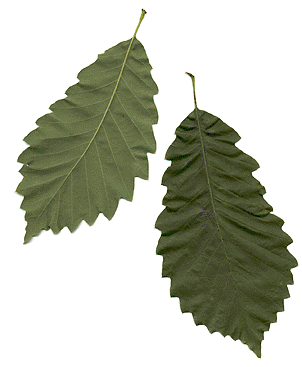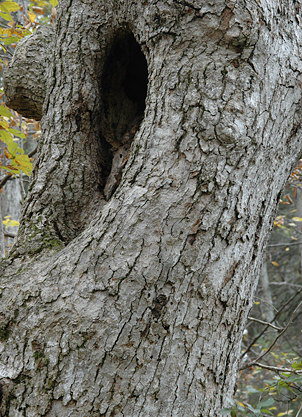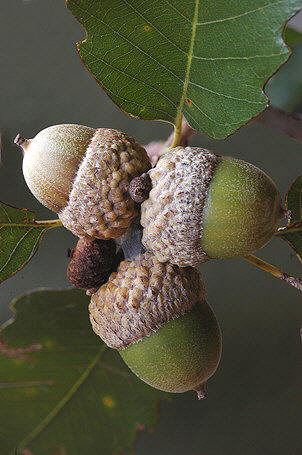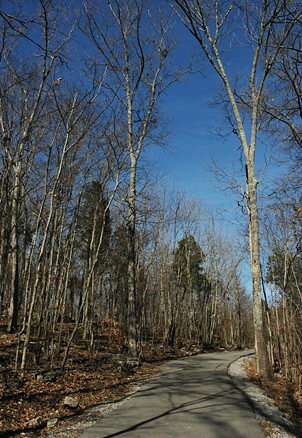| |
|
| |
 |
| |
Chinquapin Oak Leaf |
Identification:
The leaves
are simple,
alternate, paler and
downy below and 4 inches to 6 inches
in length. The margin of the leaves has large teeth that
are tipped with glands (but not bristles).
| |
|
 |
|
|
Chinquapin Oak Bark |
The bark of the Chinquapin Oak is
ashy-gray with shallow fissures. The bark breaks into large
flaky scales on older trees.
Cavities like the
one seen in this tree are used for shelter by many woodland
creatures, including owls like the Barred Owl.
| |
|
| |
 |
| |
Chinquapin Oak Acorns |
The twigs of the Chinquapin Oak can
vary from yellowish to reddish to straw-brown in color.
The twigs are slender, smooth and
lenticellate. As with
most oaks, the buds occur laterally and as a
cluster at the end of
the twig. The buds are 3/16 inch long and orange-brown.
The scales have a gray margin.
Other Uses
and Lore:
Native Americans
ground the acorns into flour for cooking. Pioneers used the
very heavy and durable wood for all types of construction, including
split rail fences. Railroads used the wood for railroad ties,
and much timber was used for bridge planking.
The
Trail From Station Six to Station Seven
 |
| Winter Trail
|
It is a short
distance from Station Six to Station Seven. You may want to
take a minute just to stop and listen. Often, even when it
seem very quiet, you will be able to pick out the notes of a
Carolina Wren or another bird of the winter woods. Station
Seven will be on the right side of the trail.
|

